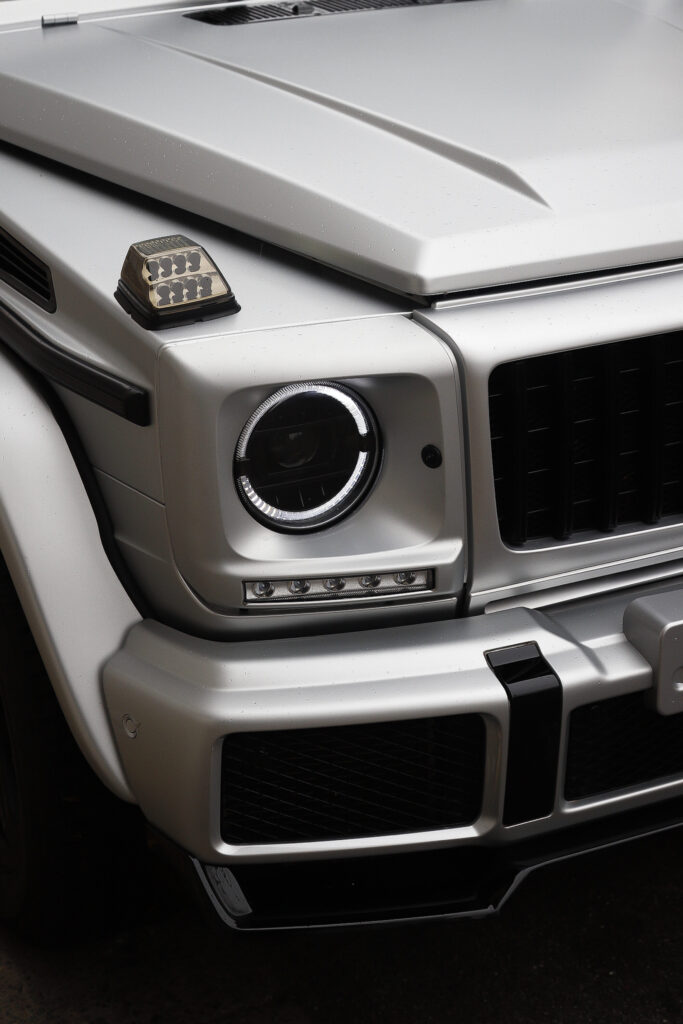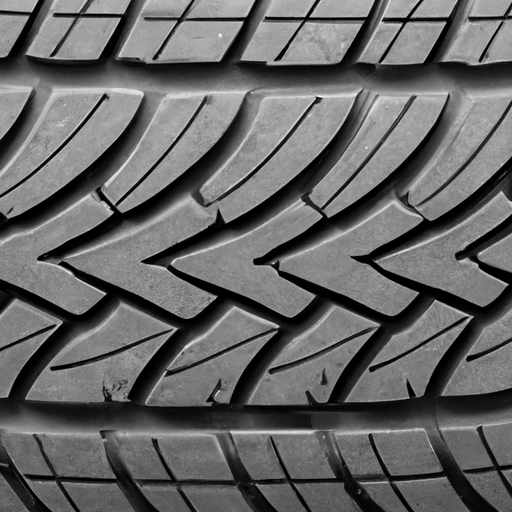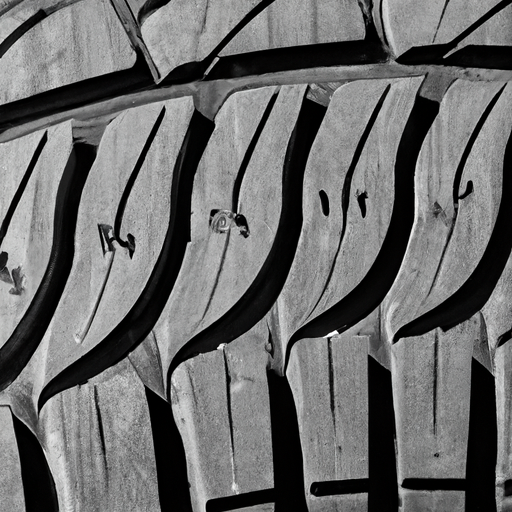Have you ever wondered about the importance of tire tread when it comes to maintaining your vehicle? The role that tire tread plays in maintenance is crucial, as it directly affects the safety and performance of your car. From providing traction on various road conditions to ensuring proper handling and braking, tire tread is an essential component that deserves your attention. In this article, we will explore the significance of tire tread and why regular inspections and replacements are necessary to keep you and your passengers safe on the road. So, let’s dive into this topic and discover how tire tread contributes to overall vehicle maintenance!
1. Importance of Tire Tread
When it comes to maintaining your vehicle, one component that should never be overlooked is the tire tread. The tire tread plays a crucial role in ensuring your safety on the road and the overall performance of your vehicle. Let’s explore the various ways in which tire tread is important:
1.1 Enhances Traction
One of the primary functions of tire tread is to provide traction on the road. The tread pattern is designed to grip the road surface, especially during wet or slippery conditions. Without proper tire tread, your vehicle may struggle to maintain traction, leading to a loss of control and increasing the risk of accidents.
1.2 Improves Handling and Stability
Good tire tread not only enhances traction but also improves the handling and stability of your vehicle. The tread pattern helps to channel water, snow, and debris away from the tire, maintaining a firm grip on the road. This improved stability allows for better maneuverability and control, especially during cornering or sudden evasive maneuvers.
1.3 Affects Braking Performance
The condition of your tire tread significantly impacts your vehicle’s braking performance. The tread channels help to disperse water and debris from under the tire, allowing for optimal contact between the rubber and the road surface. Worn-out tread reduces this contact, leading to longer braking distances and increasing the risk of accidents, especially in wet conditions.
1.4 Ensures Control in Wet Conditions
Driving in wet conditions can be challenging, but having sufficient tire tread can give you the confidence you need. The tread pattern is designed to evacuate water from the tire’s contact patch, reducing the risk of hydroplaning. Hydroplaning occurs when a layer of water builds up between the tire and the road surface, causing a loss of traction and control. Adequate tire tread depth is essential to prevent hydroplaning and maintain control in wet conditions.
1.5 Prevents Hydroplaning
Hydroplaning is a phenomenon that occurs when your vehicle’s tires lose contact with the road due to a layer of water between the tire and the road surface. With good tire tread, the water is channeled away, allowing the tires to maintain contact with the road. This ensures better control and reduces the risk of accidents caused by hydroplaning.
2. Tire Tread Wear Indicators
Now that we understand the importance of tire tread, let’s explore how we can identify when it’s time to replace our tires. Tire tread wear indicators are a key tool in determining the condition of your tires and ensuring your safety on the road.
2.1 Purpose of Tread Wear Indicators
Tread wear indicators, also known as wear bars, are small rubber bars built into the tire grooves. These bars are strategically placed to indicate when the tire tread has worn down to an unsafe level. They serve as a visual indication for drivers to assess the condition of their tires and determine if they need replacement.
2.2 Identifying Tread Wear Indicators
Tread wear indicators are easy to identify, as they are typically marked by small raised rubber bars located between the tread grooves. When the tread wears down to the level of these indicators, it is a clear sign that the tire has reached its minimum safe tread depth and should be replaced.
2.3 Measuring Tread Depth
While tread wear indicators provide a visual cue for tire replacement, measuring the actual tread depth is equally important. This can be done using a tread depth gauge, a tool specifically designed to measure the depth of the tire tread. By measuring the tread depth at multiple points across the tire, you can determine if the tread is within the acceptable range or if it has worn down excessively.
2.4 Safe Minimum Tread Depth
The minimum safe tread depth varies depending on local regulations and geographic conditions. In general, the legal minimum tread depth is around 2/32 of an inch (1.6 mm), but it is recommended to replace your tires before they reach this threshold. For optimal safety and performance, it is advisable to replace tires when the tread depth reaches 4/32 of an inch (3.2 mm) or even earlier, especially in wet or winter conditions.
2.5 Importance of Regular Inspection
Regular inspection of your tire tread is crucial to ensure your safety on the road. By visually inspecting the tires and using a tread depth gauge, you can identify any signs of excessive wear or damage. It is recommended to inspect your tires at least once a month and before long journeys. If you notice uneven wear patterns, bald spots, or any other irregularities, it is important to have your tires inspected by a professional and replaced if necessary.

3. Impact of Tire Tread on Fuel Efficiency
The condition of your tire tread not only affects your safety but also has a significant impact on your vehicle’s fuel efficiency. Let’s explore how tire tread can influence your fuel consumption and what you can do to optimize it.
3.1 Rolling Resistance and Fuel Consumption
Rolling resistance refers to the amount of force required to keep the tires rolling. Tire tread plays a crucial role in determining the rolling resistance of your vehicle. Worn-out tread increases rolling resistance, causing the engine to work harder and consume more fuel. By maintaining proper tire tread depth, you can minimize rolling resistance and improve fuel efficiency.
3.2 Optimizing Tread Design for Efficiency
Tire manufacturers continuously strive to improve tread design to enhance fuel efficiency. Optimized tread patterns and compound formulations can help reduce rolling resistance and improve fuel economy. When purchasing new tires, consider choosing models specifically designed for fuel efficiency, as they often have low rolling resistance and advanced tread designs.
3.3 Rotation and Alignment Importance
Regular tire rotation and alignment are essential maintenance practices that can help maximize fuel efficiency. Uneven wear patterns can increase rolling resistance and negatively impact fuel consumption. By rotating your tires regularly and ensuring proper alignment, you can promote even tread wear and improve fuel efficiency.
4. Ensuring Longevity of Tire Tread
Proper maintenance is key to ensuring the longevity of your tire tread. Here are some important practices to follow to maximize the lifespan of your tires:
4.1 Proper Inflation Pressure
Maintaining the correct tire inflation pressure is crucial for the longevity of your tire tread. Overinflated or underinflated tires can lead to uneven wear patterns, reducing the lifespan of the tread. Regularly check your tire pressure and inflate them to the recommended level provided by the vehicle manufacturer.
4.2 Regular Tire Rotation
Tire rotation involves moving the tires from one position to another, typically from front to back and from side to side. This practice promotes even tread wear and extends the lifespan of your tires. Consult your vehicle’s owner’s manual or tire manufacturer’s recommendations for the appropriate tire rotation intervals.
4.3 Alignment and Balancing
Proper wheel alignment and balancing are essential for maintaining the longevity of your tire tread. Wheel misalignment can cause uneven tread wear, leading to premature tire replacement. Regularly have your wheel alignment checked and adjusted if necessary. Additionally, tire balancing ensures even weight distribution across the tire, preventing irregular tread wear.
4.4 Avoiding Overloading
Overloading your vehicle beyond its recommended weight limit can put excessive strain on the tire tread, causing it to wear down faster. Follow the vehicle manufacturer’s recommendations for maximum load capacity, and avoid carrying unnecessary weight.
4.5 Adjusting Driving Habits
Your driving habits can significantly impact the wear and tear on your tire tread. Aggressive driving, sudden braking, and high-speed maneuvers can all contribute to accelerated tread wear. By adopting a smooth and moderate driving style, you can help extend the lifespan of your tire tread.

5. Different Types of Tire Tread Patterns
Tire tread patterns come in various designs, each serving a specific purpose and offering distinct performance characteristics. Let’s explore the different types of tire tread patterns and their unique features:
5.1 Symmetrical Treads
Symmetrical tread patterns feature continuous ribs or blocks across the entire width of the tire tread. They are designed for all-season performance, providing good traction on both dry and wet surfaces. Symmetrical treads offer a quiet and comfortable ride, making them a popular choice for regular passenger vehicles.
5.2 Directional Treads
Directional tread patterns are characterized by v-shaped grooves that point in a particular direction. These grooves are designed to channel water away from the tire, enhancing wet traction and preventing hydroplaning. Directional treads are commonly found in high-performance and sporty tires, offering excellent handling and grip on wet surfaces.
5.3 Asymmetrical Treads
Asymmetrical tread patterns combine different tread designs on the inner and outer portions of the tire. The inner section is designed for water evacuation, while the outer section focuses on dry traction and cornering stability. Asymmetrical treads provide a balanced performance and are often seen in performance-oriented vehicles.
5.4 Staggered Treads
Staggered tread patterns, also known as differentiated treads, feature different tread block sizes on the front and rear tires. This design optimizes traction and performance in specific driving conditions. For example, wider blocks on the rear tires can enhance acceleration and grip, while smaller blocks on the front tires promote better steering response.
5.5 Winter and All-Season Treads
Winter and all-season tires have specialized tread patterns designed to handle specific weather conditions. Winter treads feature deeper grooves, sipes, and softer rubber compounds to provide enhanced traction on snow and ice. All-season treads offer a balance between dry and wet grip, making them suitable for year-round driving in moderate climates.
6. Factors Affecting Tire Tread Life
Several factors can influence the lifespan of your tire tread. Understanding these factors can help you make informed decisions and take appropriate measures to prolong the life of your tires:
6.1 Road Surface and Conditions
The type of road surface you frequently drive on can impact the wear and tear on your tire tread. Rough or abrasive road surfaces, such as gravel or poorly maintained roads, can accelerate tread wear. Similarly, extreme weather conditions, such as excessive heat or freezing temperatures, can also affect tread longevity.
6.2 Driving Style and Habits
Your driving style and habits play a significant role in the wear and tear of your tire tread. Aggressive acceleration, hard braking, frequent cornering, and high-speed driving can all contribute to faster tread wear. By adopting a smooth and moderate driving style, you can minimize the strain on your tire tread and extend its lifespan.
6.3 Climate and Temperature
Climate and temperature variations can affect tire performance and tread life. In hotter climates, excessive heat can cause the tire rubber to deteriorate faster, leading to premature tread wear. Similarly, cold temperatures can harden the rubber compound, reducing flexibility and grip. It is essential to choose tires appropriate for the climate and temperature conditions in your area.
6.4 Tire Maintenance Practices
Proper tire maintenance plays a vital role in extending the life of your tire tread. Regularly checking tire pressure, maintaining proper alignment and balance, and performing routine inspections can help identify and address potential issues early on. Following recommended maintenance practices and seeking professional assistance when needed can significantly impact the lifespan of your tire tread.

7. Common Tire Tread Problems
Despite our best efforts in maintaining our tires, certain issues can arise that impact the tread and overall performance of the tires. Let’s explore some common tire tread problems:
7.1 Uneven Tread Wear
Uneven tread wear occurs when certain areas of the tire tread wear down faster than others. This can be caused by factors such as misalignment, improper tire inflation, or suspension issues. Uneven tread wear not only compromises the performance of the tire but also increases the risk of blowouts and reduced traction.
7.2 Cupping and Scalloping
Cupping, also known as “scalloping,” refers to the formation of shallow depressions or cup-like patterns on the tire tread surface. This condition often occurs due to improper tire balance, worn-out suspension components, or alignment issues. Cupping can result in a rough and noisy ride, reduced traction, and accelerated tread wear.
7.3 Feathering
Feathering refers to the wearing down of the tread blocks in a sawtooth or feather-like pattern. It is usually caused by misalignment or suspension issues, resulting in the tire scrubbing against the road surface. Feathering can lead to increased road noise, reduced traction, and a decrease in tire lifespan.
7.4 Flat Spotting
Flat spotting occurs when a portion of the tire tread becomes flat or develops a localized wear pattern. This can happen when a vehicle is parked for an extended period, causing the weight of the vehicle to rest on the same spot of the tire. Flat spotting can lead to an uncomfortable ride, vibrations, and reduced tire performance.
7.5 Tread Separation
Tread separation refers to the detachment of the tire tread from the underlying layers. This issue is commonly associated with older or poorly maintained tires. Tread separation poses a severe safety risk, as it can lead to sudden tire failure, loss of control, and even accidents. Regular inspection and replacement of worn-out tires are crucial to prevent tread separation.
8. Risks of Driving with Worn Out Tires
Driving with worn-out tires poses significant risks to your safety and the safety of others on the road. Let’s explore some of the risks associated with driving on worn-out tire treads:
8.1 Reduced Traction and Control
Worn-out tire treads lack the necessary grooves and patterns to provide adequate traction on the road. This leads to reduced grip and control, especially in wet or slippery conditions. As a result, your vehicle may struggle to respond to steering inputs, increase the risk of skidding, and compromise your ability to navigate safely.
8.2 Increased Braking Distance
Tire treads play a crucial role in braking performance. Worn-out treads reduce the contact area between the tire and the road, resulting in longer braking distances. In emergency situations, this can significantly impact your ability to stop in time and avoid collisions, increasing the risk of accidents.
8.3 Vulnerability to Aquaplaning
Aquaplaning occurs when a layer of water builds up between the tire and the road surface, causing the loss of traction and control. Worn-out tire treads lack the channels necessary to effectively disperse water, making the vehicle more susceptible to aquaplaning. This can lead to a complete loss of control, increasing the risk of accidents, especially in wet conditions.
8.4 Potential for Tire Blowouts
As tire treads wear down, the risk of tire blowouts significantly increases. Worn-out treads weaken the structure of the tire, making it more susceptible to failure. A tire blowout can cause the driver to lose control, resulting in accidents with potentially severe consequences. Regularly inspecting and replacing worn-out tires is essential to minimize this risk.

9. Monitoring and Replacing Tire Treads
Monitoring the condition of your tire treads and knowing when to replace them is crucial for your safety. Here are some key methods and considerations:
9.1 Visual Inspection of Tread
Regularly inspecting your tire tread visually is the first step in determining its condition. Look for signs of excessive wear, such as uneven wear patterns, tread depth near the wear indicators, or visible damage. Inspect your tires from multiple angles and ensure good lighting for a thorough assessment.
9.2 Tread Wear Indicators
Tread wear indicators, as mentioned earlier, are small rubber bars built into the tread grooves. When the tread wears down to the level of these indicators, it is an indication that the tire needs to be replaced. Keep an eye on these indicators and ensure they are clearly visible. If they are worn down or no longer visible, it is time for new tires.
9.3 Using a Tread Depth Gauge
A tread depth gauge is a useful tool for precisely measuring the depth of your tire tread. It provides an accurate measurement, allowing you to determine if the tread depth is within the acceptable range. Place the gauge in multiple locations across the tread and record the measurements for each tire. Compare the results with the recommended safe minimum tread depth to make an informed decision on replacement.
9.4 When to Replace Tires
While the legal minimum tread depth is around 2/32 of an inch (1.6 mm), it is recommended to replace your tires before they reach this threshold. As mentioned earlier, a recommended minimum tread depth of 4/32 of an inch (3.2 mm) is advisable for optimal safety and performance. However, certain conditions, such as driving in wet or winter conditions or in areas with specific legal requirements, may warrant earlier replacement.
9.5 Importance of Professional Assistance
If you are unsure about the condition of your tire treads or need assistance in determining when to replace your tires, it is highly recommended to seek professional assistance. Tire experts and automotive technicians can provide a comprehensive evaluation of your tires, offer guidance on replacement, and ensure your safety on the road.
10. Regulatory Road Safety Standards
Regulatory road safety standards play a crucial role in ensuring the maintenance of tire treads and promoting road safety for all users. Let’s explore some key aspects of these regulations:
10.1 Legal Minimum Tire Tread Depth
Many jurisdictions have established legal minimum tread depth requirements to ensure safe driving conditions. While the required tread depth may vary, it generally ranges from 2/32 of an inch (1.6 mm) to 4/32 of an inch (3.2 mm). Drivers are legally obligated to replace their tires once they reach or fall below the specified minimum tread depth.
10.2 Vicarious Liability and Liability Risks
Vicarious liability refers to the legal responsibility imposed on vehicle owners for the actions or negligence of other drivers operating their vehicles. In cases where a vehicle is involved in an accident due to worn-out tires, the vehicle owner may be held liable for damages and injuries. This places significant importance on regularly monitoring and replacing tire treads to mitigate liability risks.
10.3 Safety Recommendations
In addition to legal requirements, safety recommendations are provided to ensure optimal tire maintenance and tread condition. These may include regular inspections, replacing tires before reaching the legal minimum tread depth, using specialized tires for specific weather conditions, and following recommended tire rotation and alignment practices. Adhering to these safety recommendations helps minimize the risk of accidents and promotes road safety.
In conclusion, tire tread plays a vital role in vehicle maintenance and road safety. It enhances traction, improves handling and stability, affects braking performance, ensures control in wet conditions, and prevents hydroplaning. By monitoring tire tread wear indicators, measuring tread depth, and conducting regular inspections, you can determine when it’s time to replace your tires. Optimizing tread design, practicing proper maintenance, and following safety recommendations can maximize fuel efficiency and ensure the longevity of your tire tread. Driving with worn-out tires poses significant risks, including reduced traction and control, increased braking distance, vulnerability to aquaplaning, and potential tire blowouts. Therefore, it is essential to regularly monitor and replace tire treads as needed to maintain road safety. Remember to adhere to legal requirements and safety recommendations to promote a safe and enjoyable driving experience for yourself and others on the road.


